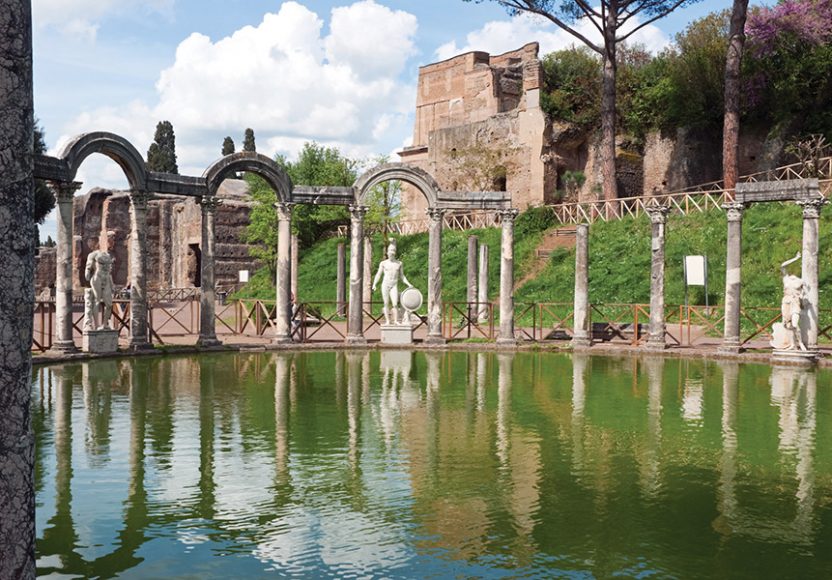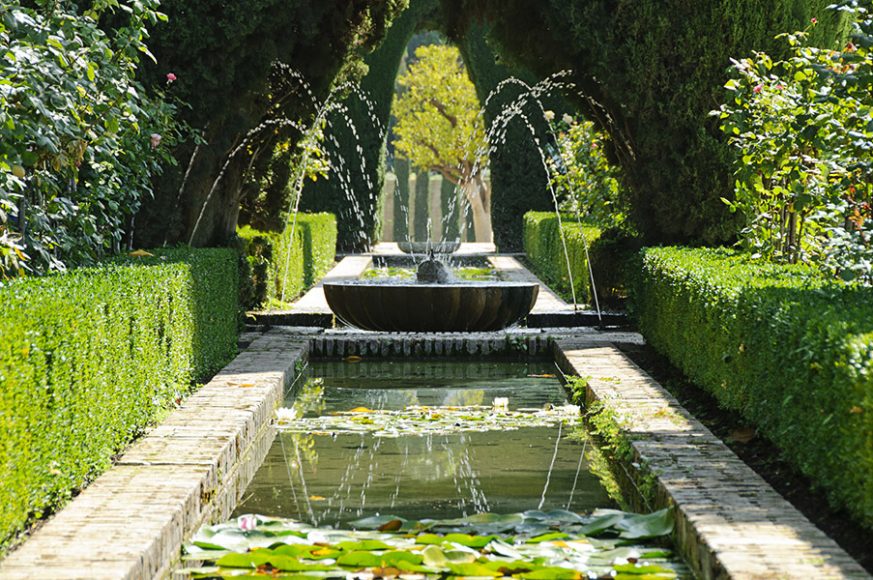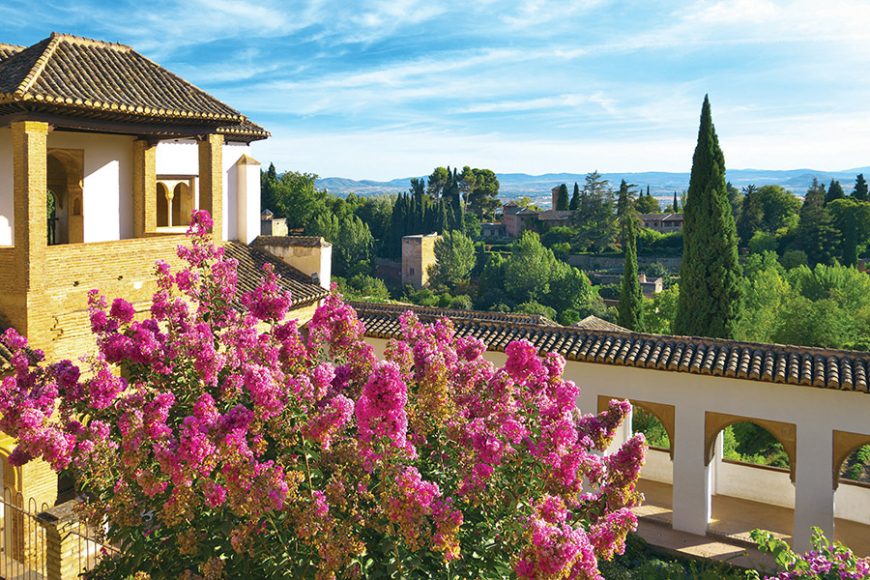“If you have a garden and a library,” Cicero observed in first century Rome, “you have everything you need.”
It’s a refreshingly simple observation for a philosopher and political theorist, professions not always known for their straightforwardness.
I have neither — unless you call a tired bed of Tickseed a garden and clusters of random, dog-eared books crudely stacked in piles around the house a library. Not sure about “need,” but a garden and a library are probably the two things I would most like to have.
Beautiful gardens, no two ever really alike, punctuate my traveling life. The Lost Gardens of Heligan in Cornwall, England, the East Gardens of the Imperial Palace in Tokyo and Innisfree Garden right here in Millbrook, are among those that have given me a great deal of pleasure in the last year. Throw in Monet’s garden at Giverny while we’re at. Also right up there, certainly in my top 10, are the Botanical Gardens in Kingstown, on one of the Caribbean’s most enchanting islands, Saint Vincent. Predating Kew (near London), and Bartram’s Gardens in Philadelphia, the Kingstown garden is one of the oldest in the Western Hemisphere. It is famously also home to the “original” breadfruit tree grown from a sucker brought to the Caribbean from Tahiti by Captain William Bligh — he of HMS Bounty fame, so the garden has infamous swashbuckling history as well as beauty to commend it.
Gardens galore. But now it’s nearly summer and with the heady scent of jasmine, the bouquet of frangipani and the (literally) intoxicating smell of Dame de Noche, from May to September, it’s the gardens of the Mediterranean that most work their siren charms on me. Here are four of my favorites:
TANGIER
Fig, dragon and banyan trees — one in particular said to be nearly 1,000 years old — punctuate Tangier’s Mendoubia Gardens, like sagacious old retainers, seeing all but saying little, if anything at all. It’s wise to remain a silent observer in these gardens and the Mendoub Palace they house, which have pretty much seen it all. That includes the stoned nonconformism of the Beats in the 1950s, the offbeat loucheness of the Rolling Stones in the 1970s and Malcolm Forbes’s 70th birthday party in 1989.
The publishing tycoon, who had recently acquired the palace, flew in 800 friends just for the occasion — some by Concorde, the B-list slumming it by 747 and DC-8. Some 300 Berber horsemen added to the revelry, as did Elizabeth Taylor, Forbes’ date for the weekend. He passed away soon after, but the Mendoubia lives on, a welcome swath of green in this intriguing desert country, snuggled insistently in the northeast corner of Africa, where the Mediterranean meets the Atlantic. In 1777, Morocco was the first country to recognize the newly formed United States as an independent nation and — interesting fact alert — another Tangier garden, that of the city’s enchanting American Legation, is still the only area outside the U.S.A. to be administered and maintained by the National Park Service.
CAP ROIG, COSTA BRAVA, SPAIN
Founded in the 1920s by local residents Nicolai Voevodsky and Dorothy Webster, the Cap Roig Botanical Garden is a jewel of the Costa Brava. An hour’s easy drive north of Barcelona, minutes from the trippery tourist resorts of Palafrugell and Calella, both in style and content, part-formal Cap Roig is eons away from the thrusting summer crowds of the coast. From a castle atop a hill, precipitous terraces plunge steeply downward, like a madman hurling himself towards the sea. I say “part-formal” because one of the unique aspects of this garden is how it melds seeming disorder with immaculate design, bringing to mind Alexander Pope’s often-quoted couplet: “True wit is nature to advantage dressed / What oft was thought, but ne’er so well expressed.”
And it’s true — if Cap Roig could speak, it would be to disclaim poetry. The views alone will smooth the ruffliest feathers, while all the colors of the park thrill, like a child picking up a kaleidoscope for the very first time. There are pinks, purples, fuchsias, violets, dazzling whites and garish golds and yellows, from the hilltop all the way down to the sparkling sea. The myriad paths are lined with exotic plants — elephant’s ears from the Azores, medlars from Japan — and the fresh, bosky scent of cypresses is always on the breeze.
THE ALHAMBRA AND GARDENS OF THE GENERALIZE, GRANADA, SPAIN
If you’ve ever heard Joaquin Rodrigo’s “Concerto de Aranjuez,” Manuel de Falla’s “Nights in the Gardens of Spain” or Agustín Lara’s “Granada” — or, for that matter, read “Tales of the Alhambra” by Tarrytown’s Washington Irving — chances are you’ve already visited the gardens of Andalusia, at least in subliminal reverie over gazpacho and croquetas de jamón in your local tapas bar. And yet nothing quite prepares you for the wonder of the Alhambra, the (mostly) 14th-century palace built by the Moors in Granada, with its magnificent neighboring gardens, the Generalife. Planted with roses, orange trees, myrtles and English elms, irrigated still by the one of the most brilliant systems imagined — developed and constructed by the Moors more than 600 six hundred years ago — Alhambra is off-the-scale grand but also touchingly intimate.
You could host an army in the citadel or give a dinner party for a dozen friends in one of the Alhambra’s dizzyingly lovely courtyards — with their fluted columns, scalloped arcades and filigree squinches — and both would feel equally “right.” No wonder the mother of Boabdil, the last ruler of Muslim Granada before it was reconquered by the Roman Catholic Ferdinand and Isabella, told him as he fled the crumbling fortress, “Weep like a woman for what you could not keep as a man.” It sure must have been a tough one to lose. (And did no one ever have a word with Mama Boabdil about gender stereotypes?)
HADRIAN’S VILLA AND TIVOLI GARDENS, ROME
Hadrian’s Villa, at Tivoli, just northeast of Rome, is the largest single estate to have survived the fall of the Roman Empire largely intact. If that simple thought alone does not make your spine tingle, an actual visit almost certainly will. Modeled on a sacred Alexandrian landscape, Villa Adriana boasts 30 buildings in all and its extensive gardens include fountains, waterfalls and an artificial grotto. The swimming pool measures 700 feet in length — I imagine those Roman pool parties must have been quite something — and the ruins of the villa’s Corinthian columns alone rival anything you will find in Rome itself.
I have never found anywhere too exciting to stay in this neck of the woods, but 40 minutes drive west, on the other side of the Eternal City, just off the old Via Aurelia, lies the resort town of Fregene. In the 1970s and ‘80s, it enjoyed its 15 minutes of fame, with a Roman crowd bored of Capri, or too lazy to drive the extra 80 miles up to Porto Ercole. Then, mercifully, it slipped back into oblivion. Fregene has no in-crowd, no glitz, no Jet Skis, no jewels, and that is the joy of it. With its forest of pines between the town and the sea, it fairly buzzes with life of its own from June to September. There are ballgames on the beach, cafés and pizzerias galore, and the world’s best gelato at teatime, or any time. The evening passegiata along the main drag is pure theater. It’s old-fashioned, family fun now virtually extinct on the Med — so go, before it’s too late. Because, honestly, for all its grandeur, I doubt the ancient Romans, Cicero included, could have enjoyed themselves more at the swanky Villa Adriana than at this humble Italian resort.




